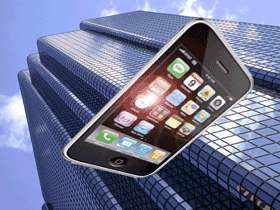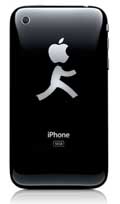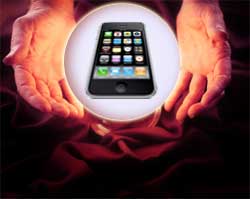 A TechCrunch article citing research by SquareTrade, a company that sells insurance plans for smartphones, says that Apple’s iPhone is “an accident magnet.” I wouldn’t have drawn that same conclusion.
A TechCrunch article citing research by SquareTrade, a company that sells insurance plans for smartphones, says that Apple’s iPhone is “an accident magnet.” I wouldn’t have drawn that same conclusion.
SquareTrade’s report, “One-Third of iPhones Fail Over 2 Years, Mostly From Accidents,” should be viewed with skepticism. For starters, while SquareTrade used a sample of many thousand smartphones covered by its warranty products, it didn’t cleanse its data (for instance by removing unlocked phones), and performed no statistical tests. Rightfully, the report includes the disclaimer:
SquareTrade has made efforts to ensure that the data we present is correct. SquareTrade makes no warranty, express or implied, about the accuracy of the data. SquareTrade is an independent third party, and has no affiliation with any of the handset manufacturers cited in this study. Users of the information in this document acknowledge that SquareTrade cannot be he liable for any damages whatsoever to any individual, organization, company, industry group or representative arising from the use of this data.
TechCrunch seized on the report’s findings that over 20% of iPhones have been damaged in the last 22 months, with cracked screens being the leading cause of damage. But the SquareTrade report doesn’t report on damage rates for other phone models, so it’s impossible to judge whether iPhones are any more likely to crack (or croak altogether) than other brands. Phones, after all, are more likely to get dropped than desktop PCs, HDTVs, or printers–no matter who manufactured them.
The study does say that iPhones are “significantly more reliable” than phones manufactured by Palm and RIM (9.9% of iPhones cited in the survey malfunctioned, versus 15.3% of BlackBerry and 19.9% of Treo phones). And it says that the iPhone 3G is a more reliable handset than the original iPhone.
My statistics are a bit rusty, but a common test called a T-test would have shown whether there was any significance difference between the iPhone’s likelihood of being damaged versus its competitors. The same goes for its supposedly higher manufacturing quality. Bottom line: It’s worth thinking twice before drawing conclusions about the iPhone from a single survey or news report. Colorful graphs always don’t tell us much.

 A
A  Much of what’s neat about
Much of what’s neat about 
 Now that the iPhone 3GS is out and many (but by
Now that the iPhone 3GS is out and many (but by 
 On Wednesday, Apple released
On Wednesday, Apple released